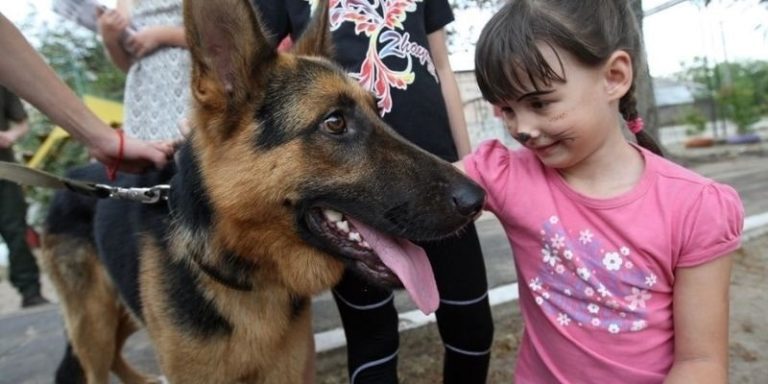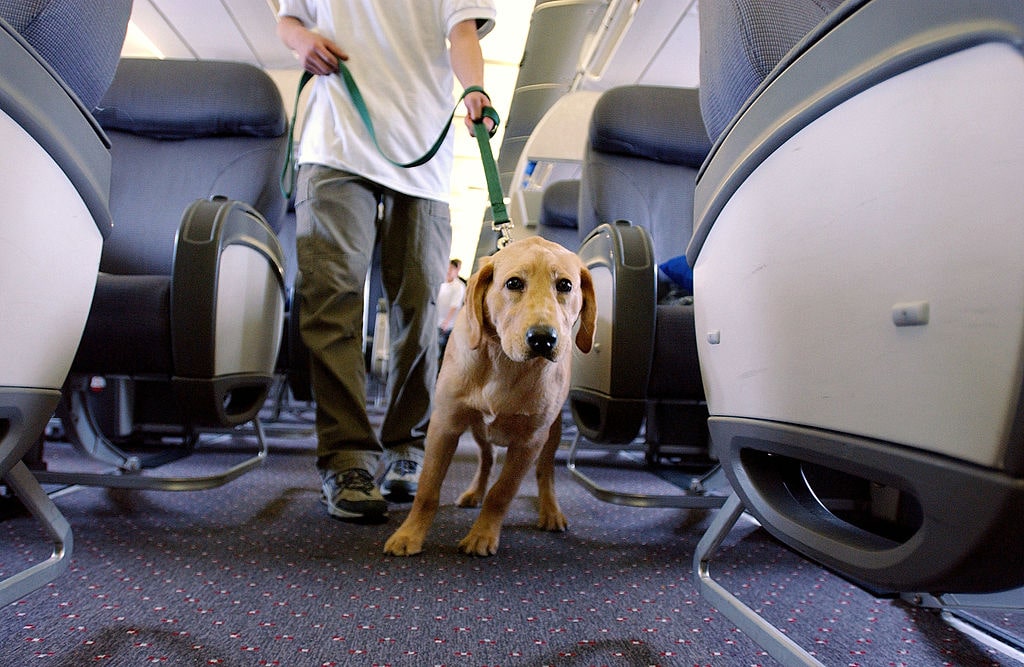Dogs Can Tell When Humans Make a Mistake, Says Study
An experiment tested what canines can understand about human intentions and actions.
By: Sarah Cowgill | September 15, 2021 | 480 Words

(Photo credit should read Mykola Myakshykov/ Ukrinform/Barcroft Media via Getty Images)
Dogs have always been a human’s best friend: they are loyal, playful, can whiff out explosives, and help find missing people. But researchers now say these loyal canines can tell whether humans have the same good intentions for them. In other words, they know if you’re up to something. Researchers in Germany led by Britta Schünemann from the University of Göttingen ran a study with more than 50 dogs to see if the pups could tell the difference between human accidents and purposeful actions.
The findings show that, yes, your furry friend knows when you are playing tricks on them.

(Photo by Stephen Chernin/Getty Images)
And here’s how the scientists figured it all out. Dogs and people were on opposite sides of a see-through barrier. All dogs received three conditions:
- Unwilling Condition: The scientist intentionally refused to give the dog the treat.
- Unable Condition 1: The scientist wanted to give the dog the treat but was clumsy and dropped it.
- Unable Condition 2: The scientist wanted to give the dog the treat but was prevented.
In all cases, the poor pups never got the treat. The amazing result of the experiment showed that dogs seemed to understand when the scientist was acting intentionally versus accidentally.
The good news is how much we have learned from this experiment:
- Dogs are better than even chimpanzees in reacting to human pointing gestures.
- Dogs use the gaze of a human to decide if, say, a pointing direction is for the dog to decipher or a simple human gesture like pointing at a sign or person in the distance.
- When food was being withheld, dogs more likely sat or laid down (which is a calming behavior) rather than aggressively seeking ways to get the treat.
- Humans being unwilling to give the treat results in dogs calming themselves.
- When a human appears unable to give the treat – for example, by dropping it – dogs try to help out.
The pups could simply walk around the barrier to get their denied treat as they had been familiarized with the lab settings. But the study says that if a human is unwilling to give a treat, a dog might think it’s because the person is trying to teach it a new trick. It’s possible “the dogs thought that some form of learned action might convince the unwilling experimenter to supply the reward.”
Humans and dogs have traveled together and evolved together for thousands of years. As a result, there is an almost instinctual ability to form a close, cross-species emotional bond. As more studies become published, perhaps humans will have a more respectful view of canine friends. We all know a dog with its eye on a prize tends to be, well, dogged in its pursuit.
















